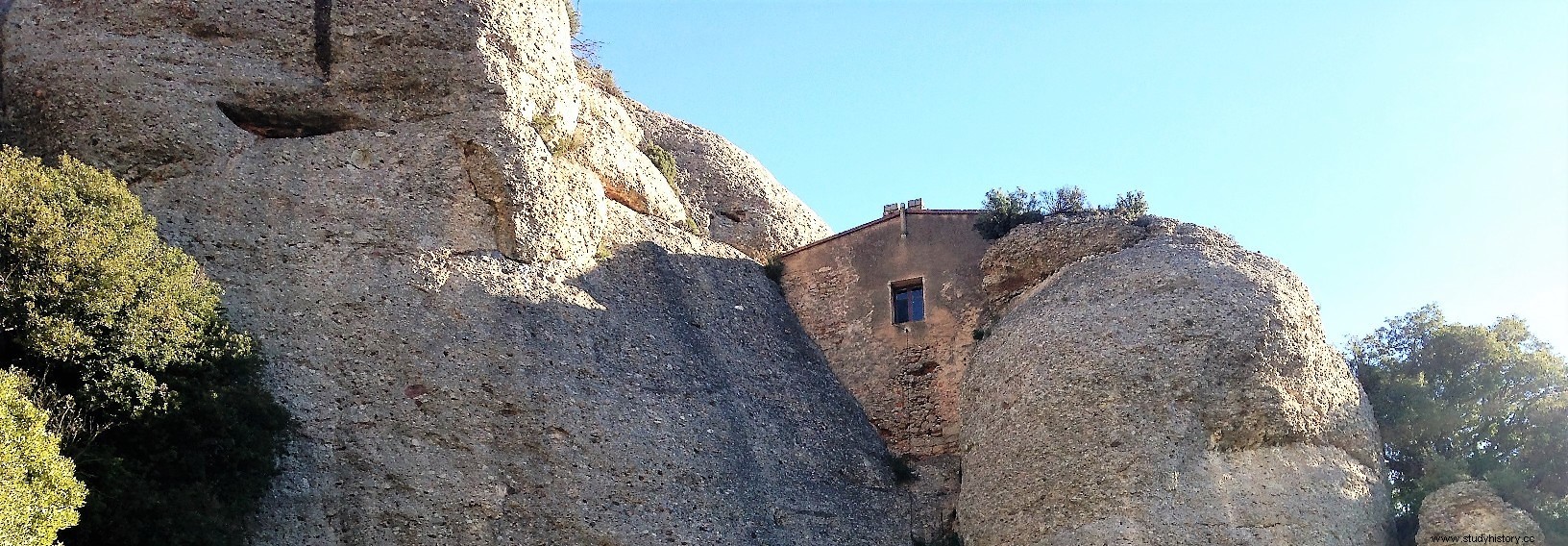
Very close to Barcelona and in a unique environment, we find the “Montanya de Montserrat Natural Park”. In which multiple excursions can be made, I will definitely stay with this one, which unites the beauty of the landscape and brings you closer to the history of the monks who inhabited it since the 11th century.
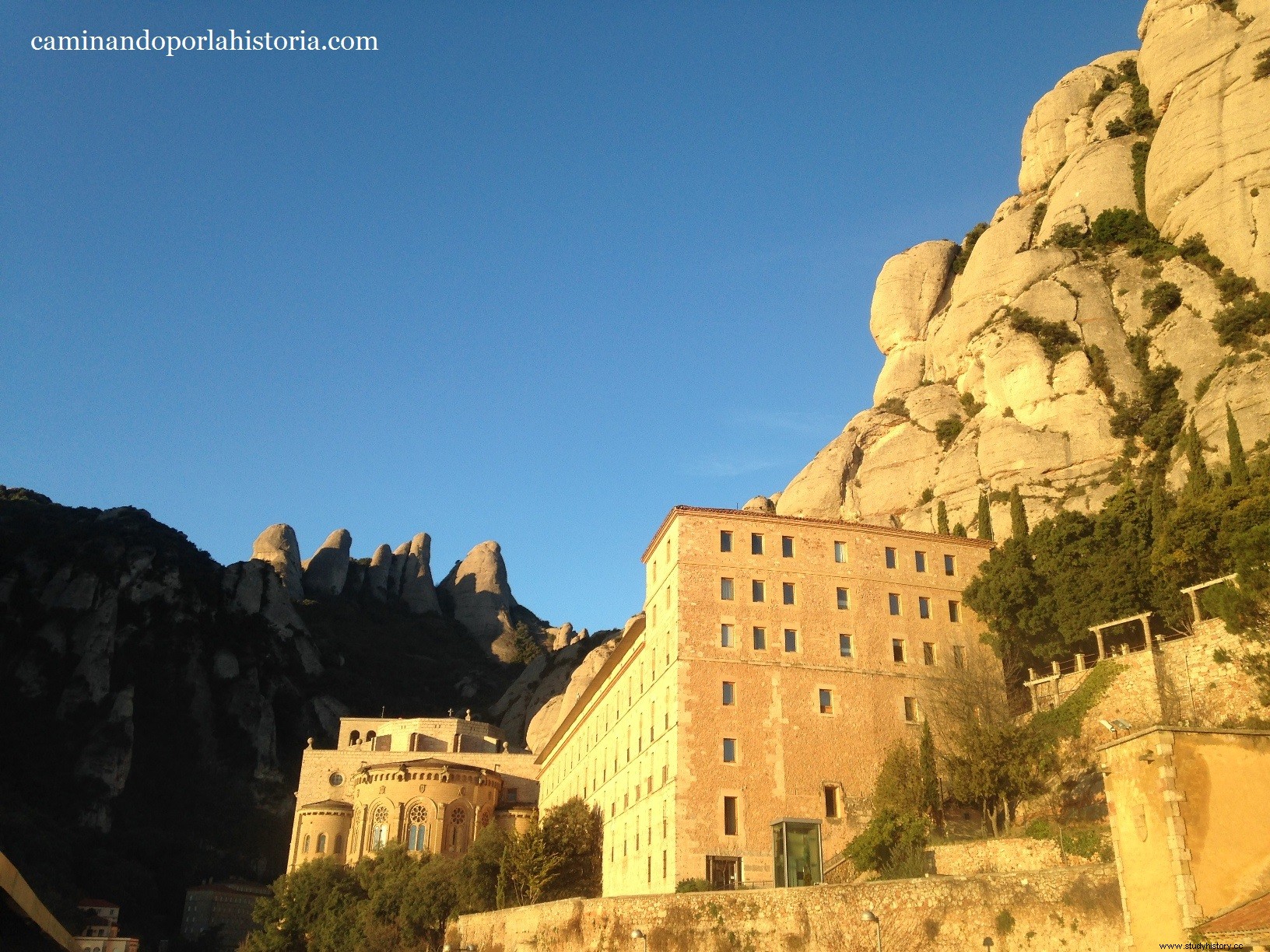
On the esplanade of the Montserrat Monastery
The hermitages of Tebaida are distributed throughout the region of the same name, this information is to distinguish them from the rest of the Natural Park. But these are the ones that personally caught my attention and I have to admit that at first what caught my attention the most was its name. Why this area is called the same as a region of ancient Egypt is something that remains unresolved but I can get an idea.
Brief history of the hermitages.
To understand their mission, we must go to their construction through the monks of the Montserrat monastery. This since its foundation belongs to the Benedictine Order, the oldest in Europe, and founded in the sixth century by Saint Benedict of Nursia. Where his main rule lies in the need to devote himself to contemplation.
What is contemplation?
To try to explain this topic we must put ourselves in a situation. The early medieval world is highly sacred, specifically in Western Europe by Christianity. The vision that these people had of life was very different from what we can have today. For them, passing through life was more of a punishment than an enjoyment, and eternal life was their obsession. Even more so in the specific case that concerns us, the monks educated in Benedictine convents through scholastic studies. That although precisely in the High Middle Ages, they were the most educated people, they were also the most predisposed to undertake these paths.
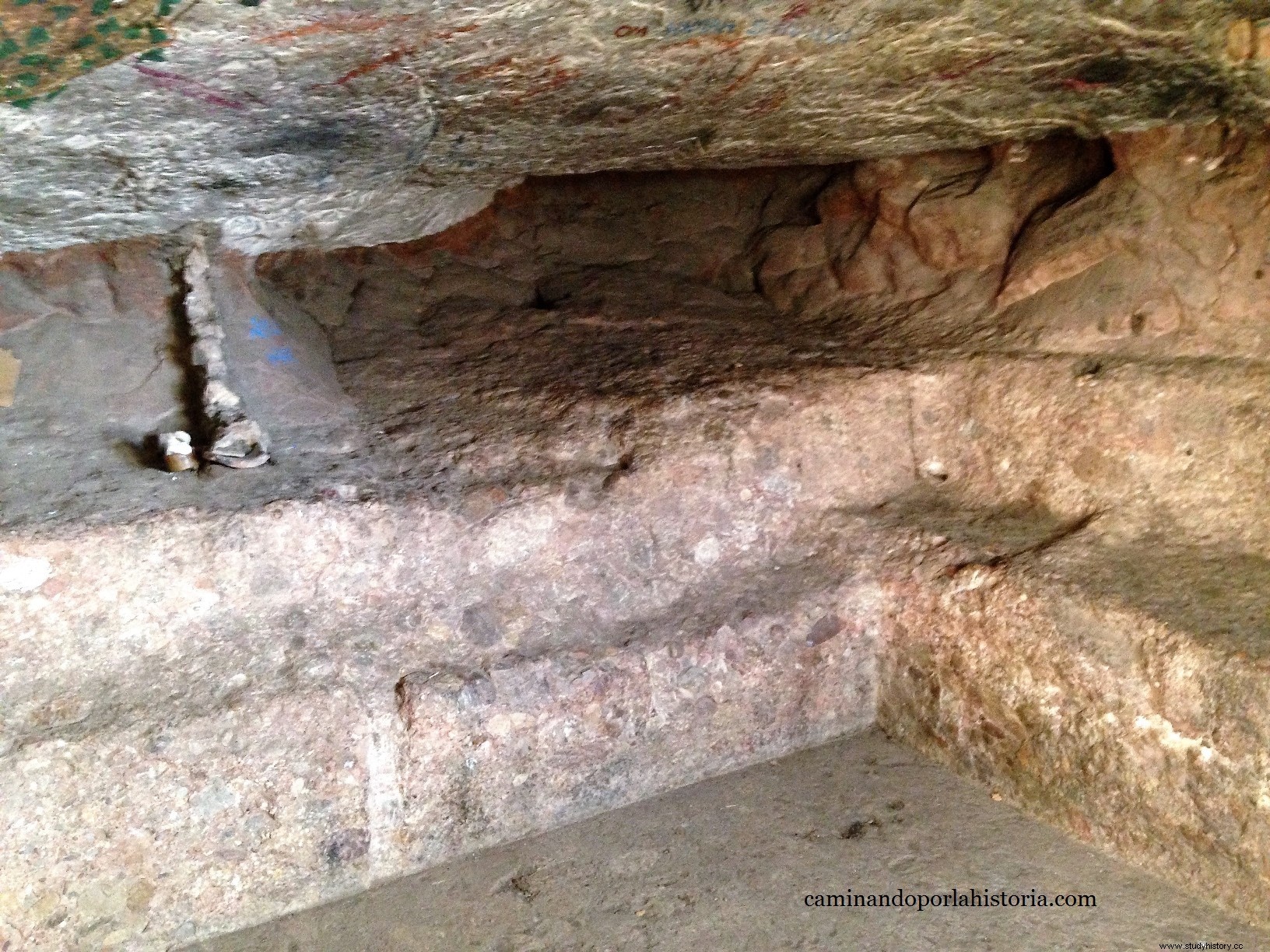
Interior of the hermitage of Sant Salvador, a place of contemplation
Contemplation consists of a series of rituals to approach eternal forgiveness, praying, studying, reading, etc. Everything was worth to be closer to God. In this context, the Benedictine monks of the Montserrat Monastery head for the mountains near the monastery. The purpose is clear, to get as close as possible to his Savior.
Hermitages through time.
This is how from the foundation of the monastery in the eleventh century, these monks begin to build these hermitages in the surroundings of the monastery of Montserrat. Throughout the Middle Ages and the later Modern Age, therefore for several centuries, these mountains were filled with these small hermitages.
Unfortunately the current ones are no longer the same ones built by the first hermit monks. This fact was commissioned by Napoleon's French army at the beginning of the 19th century. During the French war they destroyed everything in their path, the hermitages of Tebaida, and even the Benedictine Monastery of Montserrat.
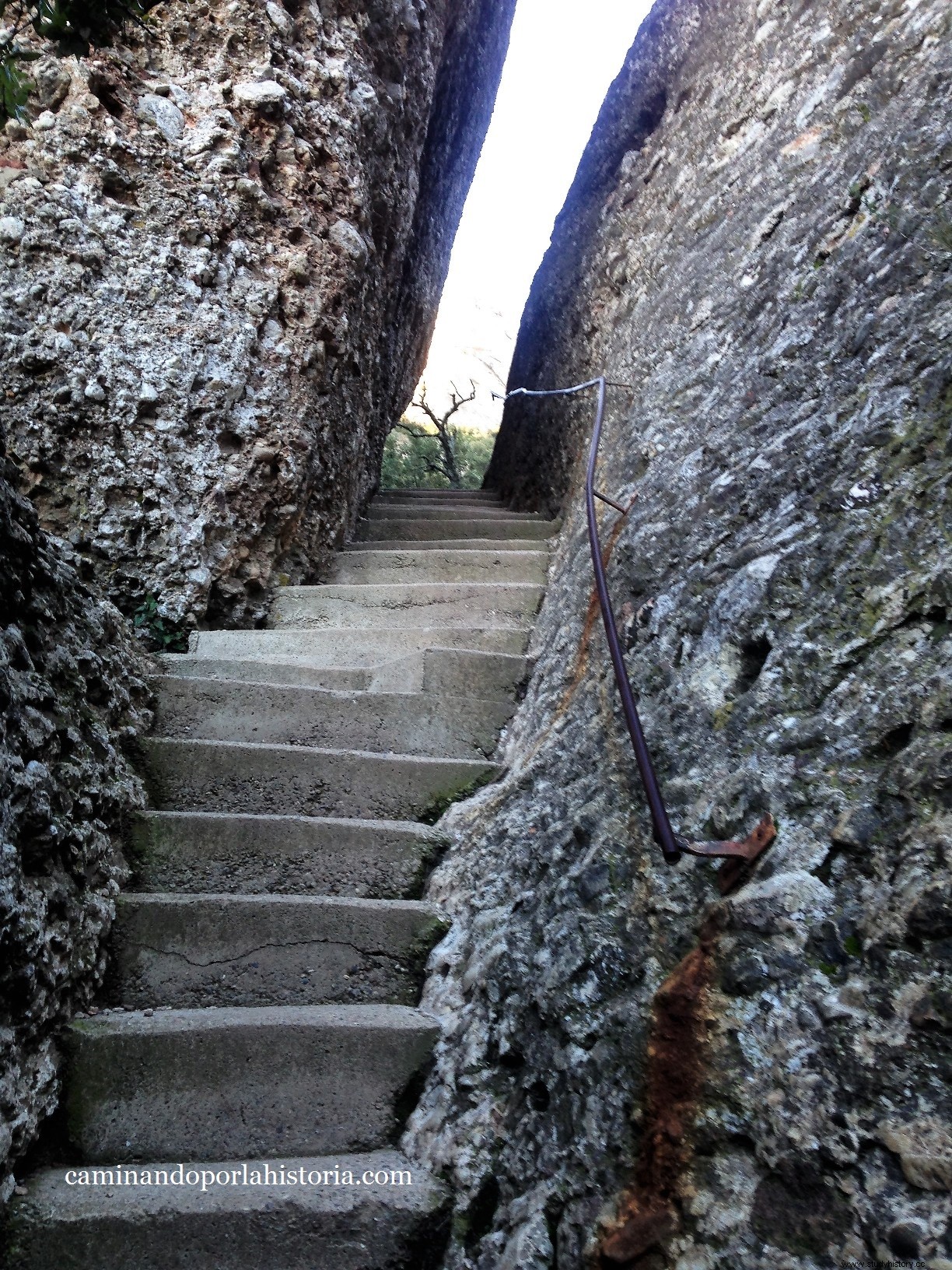
Current passage of the French and access to the hermitages of Tebaida.
So the current ones are later reconstructions, on the original sites. In spite of everything, they have served the same purpose with which they were built, what is more, at the end of the visit that I present here, you can see some that are being rebuilt today. Therefore, hermit monks have endured through time and the vicissitudes of history.
Walking route through the hermitages of Tebaida.
The route begins at the end of the esplanade of the Montserrat monastery. To get there you can do it by private car. You have to take into account, park a few meters before arriving and the cost of parking is €6.50 for private vehicles (it is a daily price). If you want to save money, you'll have to get up early, have a bit of luck, and find parking before reaching the barrier.
The other way is by public transport, from Barcelona a train (R5), with a frequency of one hour, connects Plaza España with Monistrol de Montserrat. This is the starting point of the rack railway or the cable car that goes up to said esplanade. Prices vary depending on the season and the age of the people. You will find all the information on the following website:Montserrat rack railway.
Tips for the route.
The most important thing to keep in mind is that it is a mountain route. Despite not being high mountains, we should not trust ourselves and take all the usual precautions. Good shoes, comfortable clothes, and plenty of water if it is summer are essential. Although I personally do not recommend doing it on very hot days. Once with all this, it is essential to load the backpack with a sandwich, to enjoy breakfast with the wonderful views that these monks had.
With everything prepared, we should prepare to walk between 2 and 3 hours, depending on our physical condition and the necessary stops. It is important to note that despite being a somewhat rough path, it is suitable for anyone who is minimally accustomed to walking.
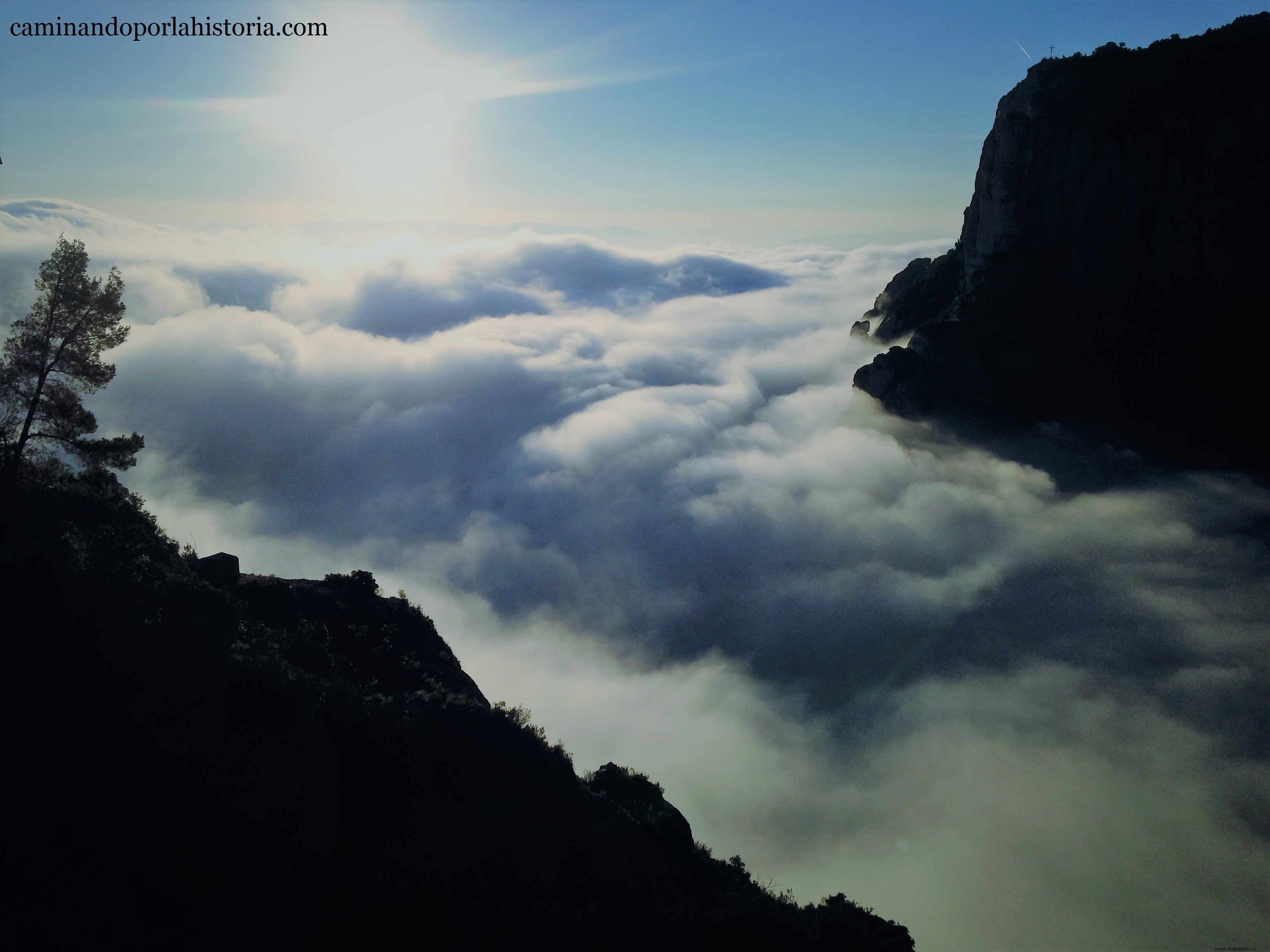
Climbing Montserrat in winter is spectacular
If I have to advise the best time to do it, it would be either in spring or in the middle of winter. The anticyclonic days of winter are spectacular in the Montserrat mountain, since it is common to see the nearby valleys full of clouds, while above the mountain you can enjoy a pleasant temperature.
Hermitage of Santa Ana.
From the end of the esplanade next to the statue of the founder of the monastery, Abad Oliva, comes the GR 172 path (red and white markings). We will follow this through some long stairs, which go through the so-called French pass, until we reach Plaza Santa Ana. It is undoubtedly the heaviest section of the route, since in a short section we exceed 200 meters of unevenness.
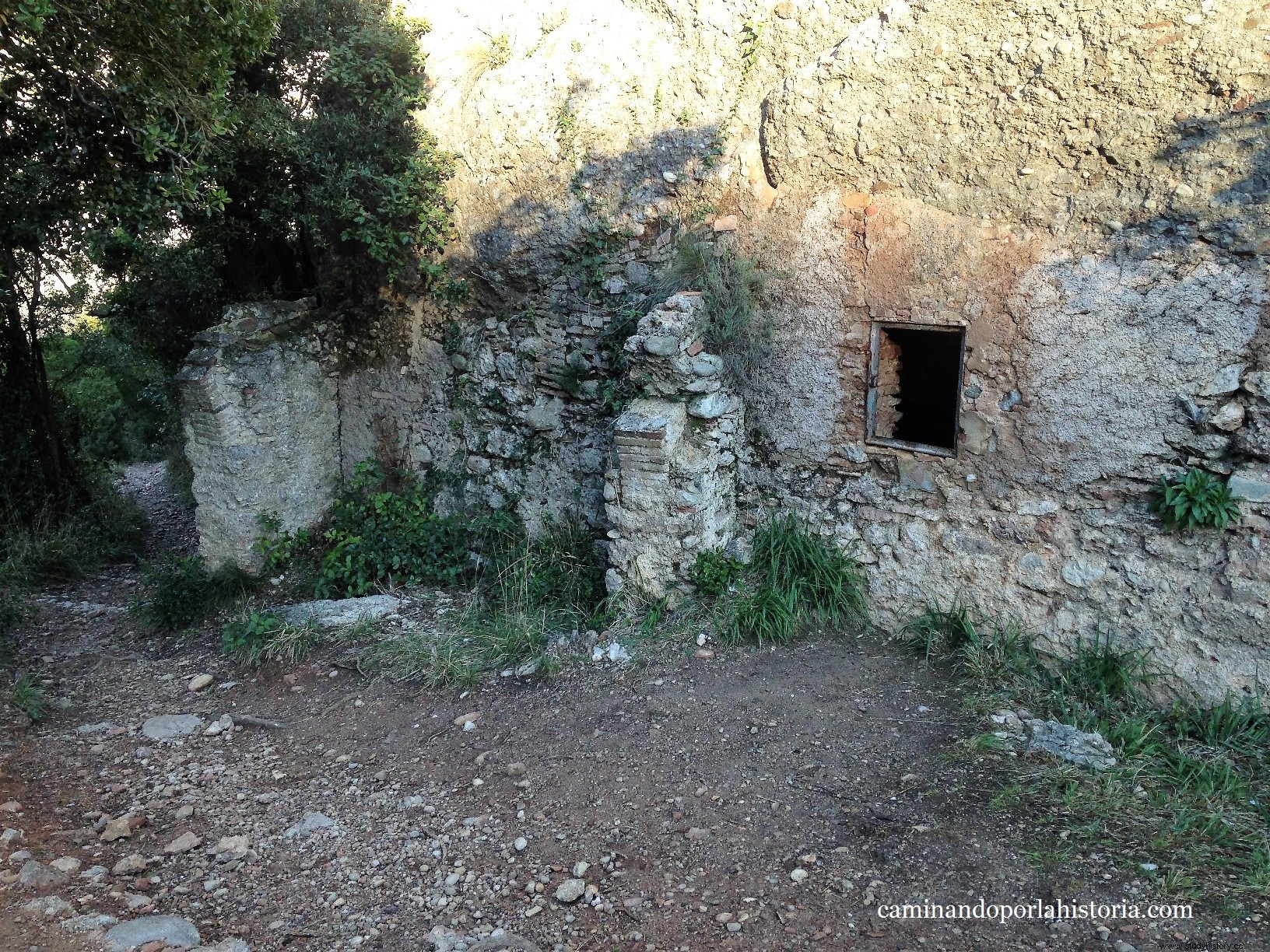
Remains of the hermitage of Santa Ana
Next to this square we find the first of these hermitages, or what remains of it. The hermitage of Santa Ana in its time was the most important of all. This happened because of its proximity to the main monastery and its central position with respect to the community of hermitages. It also served as a meeting place for all the hermit monks, who came to it on Sundays to pray. For this, it had the only church, apart from the main monastery, with an apse where the monks were placed to sing. Somehow it became the center of the social life of these monks, it was the only place where they met the rest of the community.
Hermitage of Sant Benet.
After visiting the hermitage of Santa Ana, we must go back a few meters to return to the GR 172 path, from which we will continue in the direction of the hermitage of Sant Benet, perfectly marked. To get to it, we must turn left after about 300 meters, taking the PR C-19 (yellow and white markings), already with a view of it a few meters above.
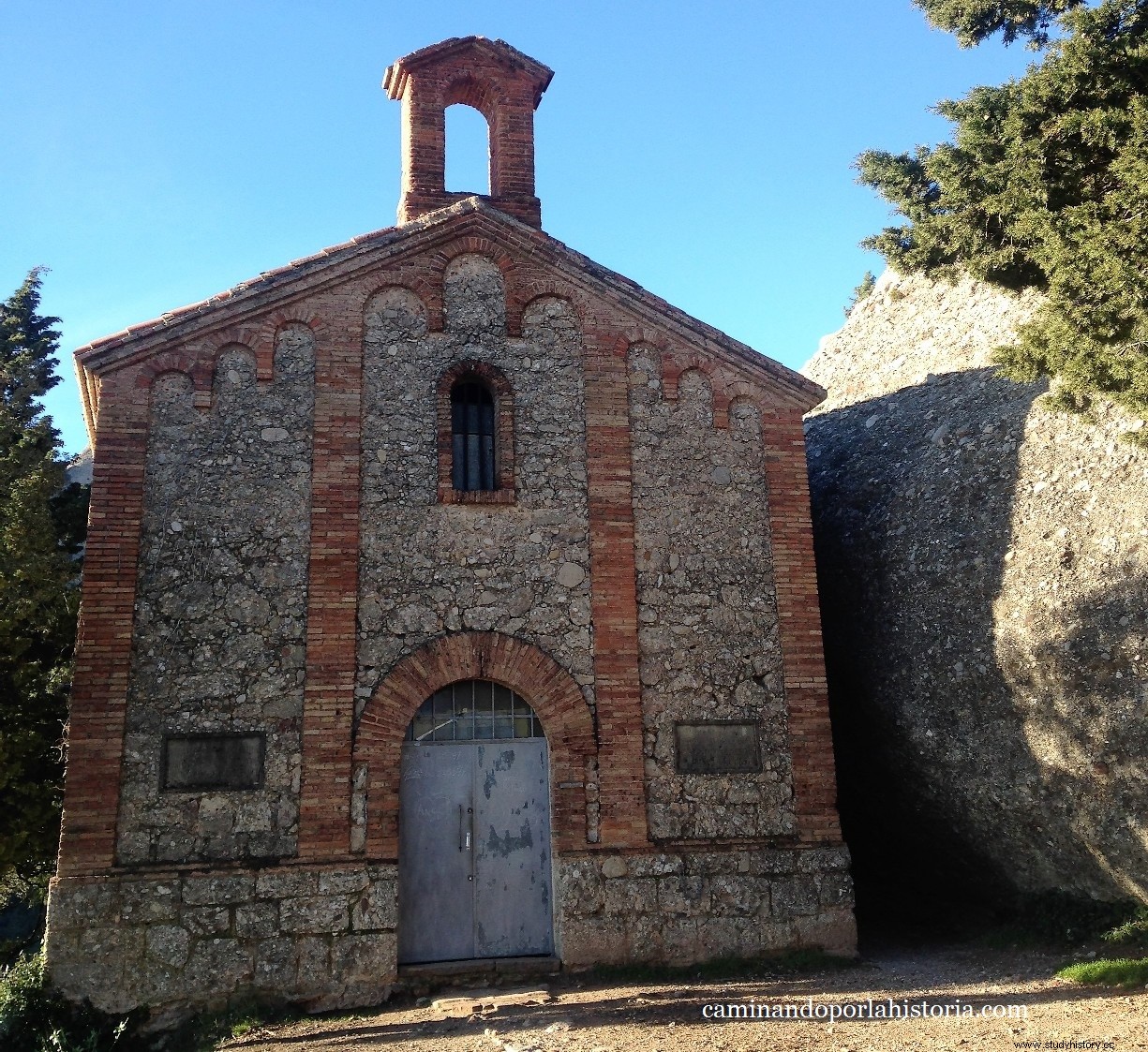
Current shelter of Sant Benet
Today this hermitage is the best rebuilt of all, as well as more recently. The reason is that it serves as a mountain refuge for the thousands of climbers who come from all over. Therefore, the exterior can remind us of any of them, although obviously the interior is conditioned for the new task.
Hermitage of Sant Salvador.
The highest of the route, since it exceeds 1,000 meters above sea level. It is also the only one in which we can feel something similar to what these monks felt. Its remote location today from the main hiking trails of the Montserrat mountain, allow this fact. In addition, this situation may be the reason for having preserved the last reconstruction, possibly the 19th century. In it we can even spend the night as the hermit monks did, since in its interior the austerity promulgated by the Benedictine monks is perfectly reflected.
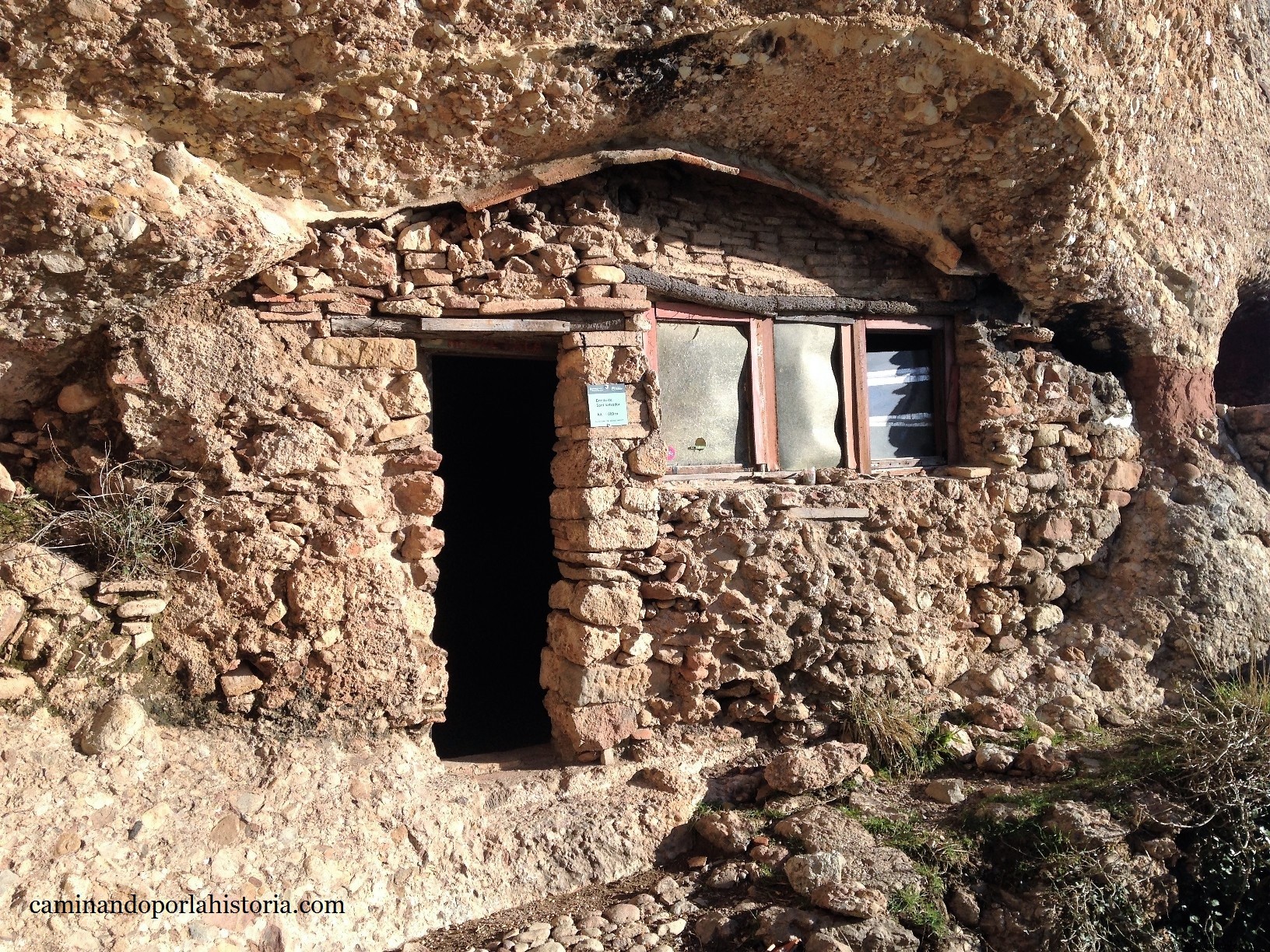
19th century reconstruction
To access it we must return to PR C-19, which after following it for about 100 meters we will find a yellow sign painted on a stone. This sign diverts us to the left towards a steep climb, but short, since in less than 10 minutes we will reach a kind of esplanade.
To the left of said esplanade we will find the old destroyed church. While on the right the hermitage of more recent construction. Precisely this is the one that you can enter and imagine the hermit way of life. Before following the path, it is essential to have a good account of the sandwich with these spectacular views.
Hermitage of the Trinity.
Then you have to go down the same path until you reach PR C-19 again. Once there, we turn left to follow the path we came from previously. In a few minutes we will find the hermitage of the trinitat. Its destruction ran from the hand of the French army, like the rest of the hermitages. But another fact will lead to its definitive abandonment, since in the midst of its reconstruction, the monk in charge of it was assassinated by some bandits, a fact that will put an end to the history of the hermitage.

reconstruction of the hermitage of Santa Trinitat
Several walls of the hermitage of the Trinitat remain standing and it is one of those that we can best observe the dimensions they had. By the way, it was the largest of all, despite not being a central point, it was a point of passage on pilgrimages. The latter will be one of its most important features, since it served as a reception point for pilgrims and people in need.
Hermitages of Santa Creu and Sant Dimes.
Following the path we came from, we arrive at the intersection of the PR C-19 with the GR 172. At that point a signpost appears, just behind it a path leads us to the last part of the route. Although the descent is one of the most complicated, it is interesting to reach the end.
At the end of the path we can see the last two hermitages of the route. Although we cannot enter any of them, since they are both inhabited, it is one of the curious points of the visit.
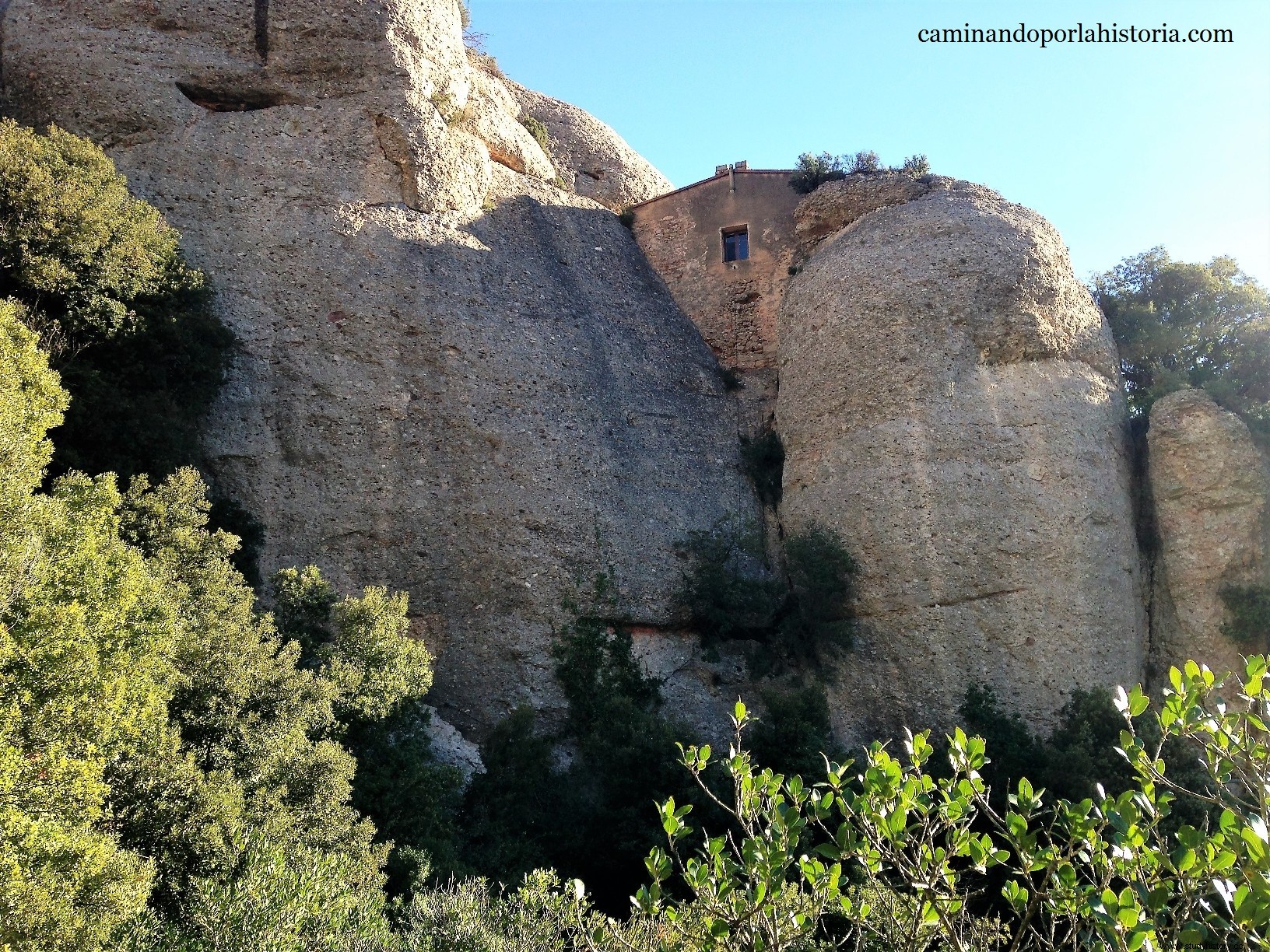
The hermitage of Sant Dimas
One of them for its spectacular location, the hermitage of Sant Dimes. From which you can see a drop of more than 200 meters of unevenness to the Benedictine monastery of Montserrat. This hermitage was built on an old high medieval castle. To later be destroyed like all of them, and rebuilt from the 70s of the 20th century. Although the best is in said reconstruction for being one of the most reliable of the entire mountain.
The other is currently being remodeled, the hermitage of Santa Creu. A sign on the same door, and the vision of the tools of the work, indicate this reconstruction. It is the best detail that the hermit way of life continues today, although I am afraid that not with the same vicissitudes of the Middle Ages or Modern.
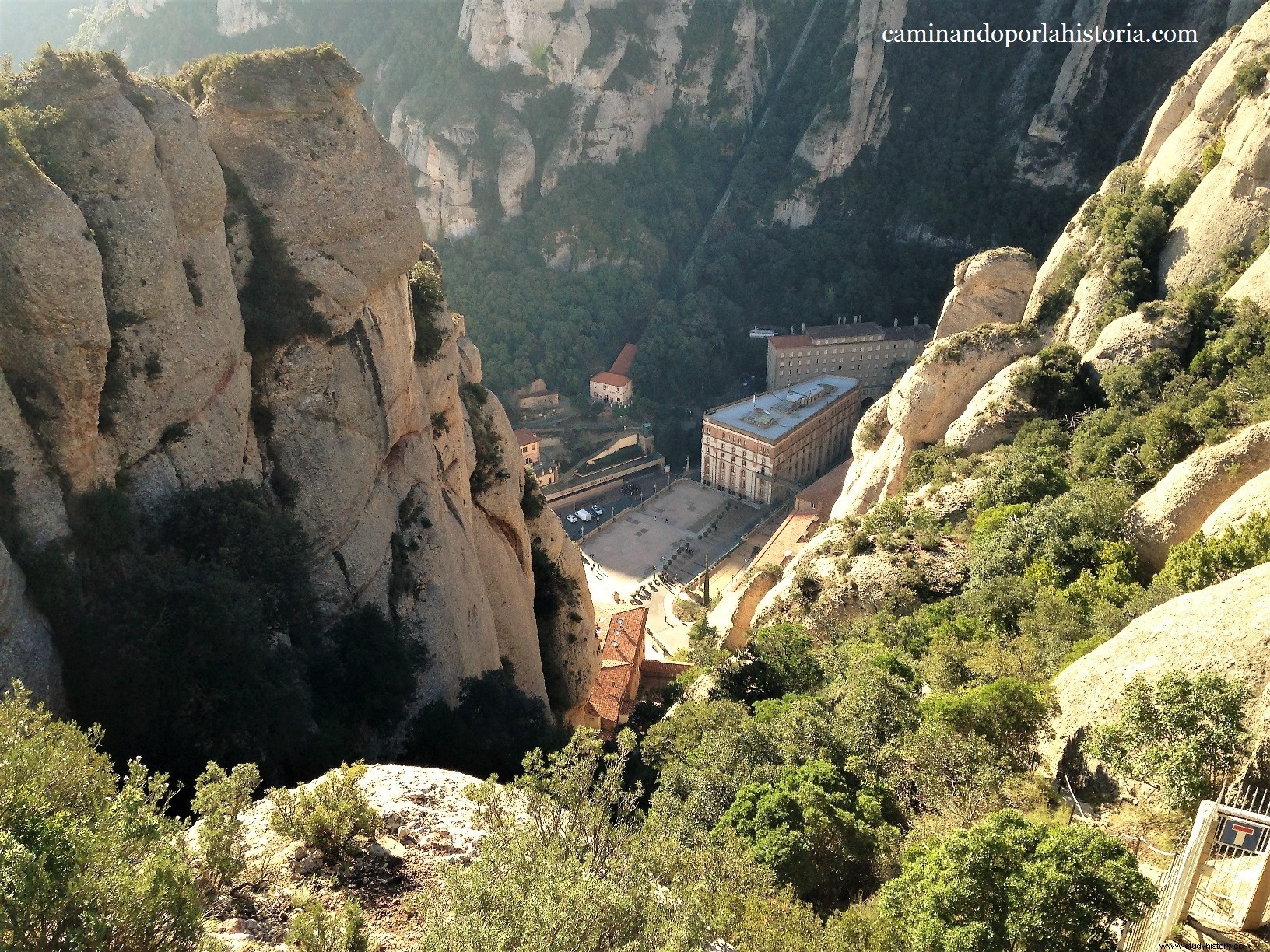
The view of the monastery of Montserrat from the entrance to the hermitage of Santa Creu
From this last hermitage a spectacular staircase leads to the monastery, but it is for private use. Therefore, to conclude the excursion we must retrace the path, initially to the last signpost, from which and through the GR 172 we reach the starting esplanade in about 40 minutes.
So far this route of the hermitages of Tebaida, after visiting them it is easier to imagine the movement of monks, hermits, or pilgrims through these mountains during the last ten centuries of history.
